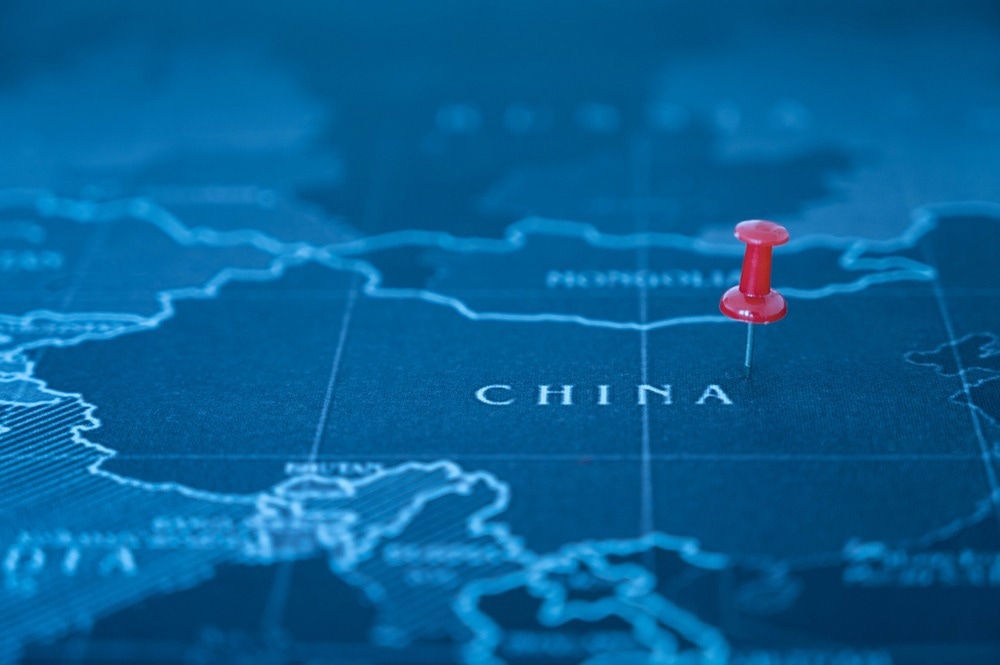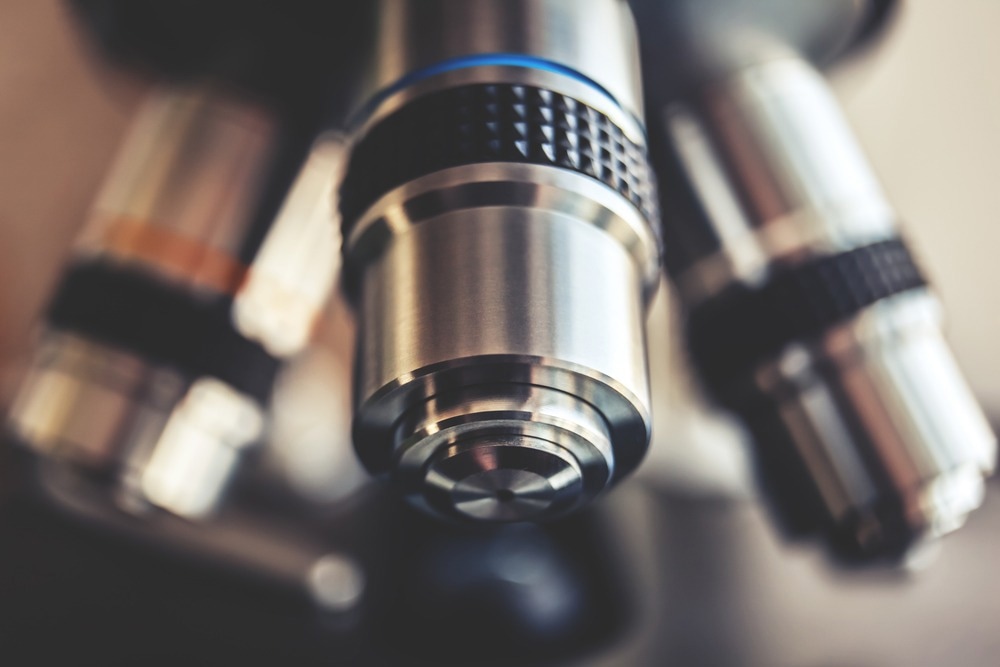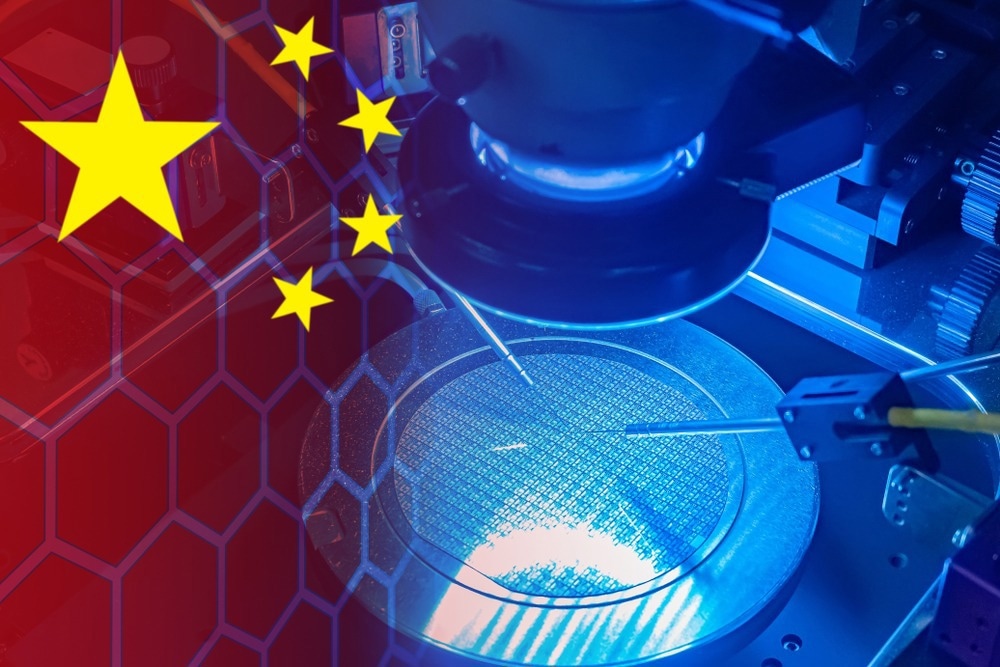 By Atif SuhailReviewed by Lexie CornerUpdated on Feb 24 2025
By Atif SuhailReviewed by Lexie CornerUpdated on Feb 24 2025With a population of 1.409 billion, China is the second-most populated country in the world. However, shifting demographics—including an aging population, declining birth rates, and a shrinking workforce—are expected to reshape the country's economic landscape. By 2035, individuals over 65 are projected to make up 32.7 % of the total population, creating demand for healthcare innovation, personalized medicine, and advanced technologies for age-related health challenges.
China’s imports include organic chemicals, oil and mineral fuels, medical and optical equipment, plastics, metal ores, and electrical machinery, while its exports feature data processing equipment, textiles, optical and medical devices, steel, iron, and apparel. The country’s low-cost production model—supported by infrastructure, inexpensive labor, high productivity, and government policies—has driven economic growth. However, a declining workforce and structural constraints are prompting a transition toward technology and innovation-driven industries.
China is moving beyond labor-intensive manufacturing toward high-tech sectors, with nanoscience and nanotechnology designated as priority research areas. The focus is on interdisciplinary research to develop new technologies and address industrial and societal challenges.1
In this article, AZoNano discusses the current state of the Chinese nanotechnology market.

Image Credit: pskamn/Shutterstock.com
Nanotechnology Organizations and Initiatives in China
China has invested significantly in nanoscience, establishing research centers, industry hubs, and global conferences to drive innovation and commercialization. Below are some key organizations and initiatives shaping China's nanotechnology landscape.
National Center for Nanoscience and Technology (NCNST)
Established in 2003 and based in Beijing, the NCNST conducts fundamental research, applied science development, and nanotechnology standardization. Researchers like Chunli Bai and Yuliang Zhao focus on developing nanotechnology applications that connect academic research with commercial industries, strengthening China's position in advanced materials and nanoscience innovation.
Recent projects at NCNST include the development of nanoscale sensors for environmental monitoring and the application of nanotechnology in climate change solutions. Ongoing investments and policy initiatives continue to support nanotechnology advancements and industrial integration in China.1
NCNST conducts its research through several specialized divisions, including:
- Laboratory for Nanomaterials
- Nanofabrication Laboratory
- Laboratory for Nanodevices
- The Testing Laboratory for Nanostructures
- Laboratory for Biological Effects of Nanomaterials and Nanosafety
- Laboratory for Nanostandardization
- Laboratory for Nanomanufacture and Applications
- Laboratory for Nanocharacterization
Suzhou Institute of Nano-Tech and Nano-Bionics (SINANO)
SINANO is a major research institute dedicated to nanotechnology advancements in electronics, biotechnology, and materials science. It conducts interdisciplinary research in various fields and collaborates with both academic institutions and industry partners to develop commercial nanotechnology applications.
SINANO’s research is structured across multiple divisions, including:
- Division of Nano-devices and Materials
- Division of Nanobiomedicine Research
- Division of System Integration & IC Design
- Division of Interdisciplinary Research
- International Laboratory for Adaptive Bio-nanotechnology
- Printable Electronics Research Center
- Nanobionic Research Division
CHINano Summit
The CHINano Summit brings together entrepreneurs, scientists, and industry leaders to explore emerging trends and future applications in nanotechnology. Organized by various forums and institutions, the summit provides a platform for discussing new developments and commercial opportunities in nanotech innovation. The event focuses on technology transfer, industrial applications, and advancements in nanomaterials and fabrication techniques.
ChinaNANO 2025
Held biennially since 2005, the ChinaNANO conferences are among the most prominent nanoscience events in Asia. ChinaNANO 2025 will bring together over 2,500 global experts to discuss scientific breakthroughs, technological advancements, and emerging research trends.
The upcoming conference in Beijing will focus on integrating nanotechnology with artificial intelligence (AI) and big data, exploring how these technologies can drive innovation across multiple industries. The event will serve as a key platform for collaboration between researchers, policymakers, and industry professionals to advance nanotechnology applications.
Nanotechnology Companies in China
China hosts several companies specializing in nanomaterials and advanced manufacturing. Below are some key organizations driving innovation in this field.
Arry Nano
Arry Nano supplies a wide range of nanomaterials, from small research quantities to large-scale industrial volumes. Their product portfolio includes carbon nanotubes (CNTs), nanoelements, and nanooxides, covering rare earth, metal, and non-metal compounds for academic and commercial applications.
The company has conducted extensive research and development in CNT synthesis and applications. With over a decade of experience, Arry Nano has refined a scalable chemical vapor deposition (CVD) method to produce high-purity single-walled (SWNTs) and multi-walled carbon nanotubes (MWNTs). Their process enables precise control over nanotube diameter, narrow diameter distributions, and minimal impurity levels.
Nano Powder R&D Center
The Nano Powder R&D Center, a division of Chengdu Alpha Nano Technology Co., Ltd., specializes in the research and development of nanomaterials. The center supplies high-quality CNTs at competitive prices to both independent researchers and large-scale users.
They also collaborate with partners to develop CNT production and applications, supporting research and industrial use.
Timesnano
Timesnano is a CNT manufacturer and the exclusive CNT supplier to the Chinese Academy of Sciences (CAS). Since 1996, the company has focused on CNT synthesis and application research, commercializing CNTs in 2003.
They offer a wide range of CNTs and related products, with production capabilities of 100 kg of SWNTs with >90 % purity and 30 tons of MWNTs with an outer diameter of 20–30 nm and >95 % purity.
Timesnano developed moving-bed catalysis technology, enabling continuous CNT production with high purity, low cost, and consistent quality.
EPRUI Nanoparticles and Microspheres Co. Ltd
This company is a high-tech enterprise specializing in the research and development of nanomaterials and microsphere products. It collaborates with leading research universities, national laboratories, and major corporations in China to advance material synthesis and applications.
As one of the largest manufacturers in the field, the company produces nanocomposites, metal nanoparticles, alloy nanoparticles, oxide nanoparticles, rare earth oxide nanoparticles, and microspheres. Their operations encompass research, manufacturing, marketing, and aftersales services.
FCC® INC
Established in 1958, FCC® INC is a division of Sino-Holding Chemicals Co., Ltd., based in Zhejiang, China. The company is ISO 9001:2008 and ISO 14001 certified and specializes in the research, development, manufacturing, and supply of specialty chemicals.
Their product portfolio includes organoclay, organoclay rheological additives (organic bentonite thixotropic agents), nanoclay, nanocalcium carbonate, carbon nanofibers, nanographite, bleaching earth, oil drilling fluid viscosifiers, cat litter, synthetic hectorite, and synthetic hydrotalcite. Additionally, they manufacture polyamide wax, PE wax, modified nonionic cellulose ether-based rheological additives, and environmental chemicals for various industrial applications.
Haizisi Nano Technology
Suzhou Haizisi (HZS) Photoelectricity Technology Co., Ltd. is a high-tech company specializing in system solutions for nano-detection, nanofabrication, and nanometrology. With nearly 20 years of experience, HZS focuses on scanning probe microscopy (SPM) research, manufacturing, and services.
Hefei Kaier Nanometer Energy and Technology Ltd
Hefei Kaier Nanometer Energy & Technology Co., Ltd. is a non-governmental, state-private enterprise focused on the research and production of nanoceramic powder and related downstream products. Originally founded as Hefei Kaier Nano-Meter Technology & Development Co., Ltd. in 1999, it was renamed in April 2009. The company exports its products to the United States, the European Union, Japan, Korea, and other markets.
Nano Medtech
Nano Medtech specializes in biotechnology applications, with a focus on developing polylactic-co-glycolic acid (PLGA) immuno-nanoparticles designed for targeting invasive epithelial tumor cells.
Sun Nanotech
Sun Nanotech is a supplier of CNTs for global markets. The company provides CVD furnaces and CNT products used across various application areas.
TiPE
TiPE is a leading nano photocatalyst manufacturer and the largest hydrosynthetic photocatalyst producer in China. The company holds advanced Nano-Hydrosynthetic™ technology and is a certified nano advanced materials manufacturer approved by the Science & Technology Commission of Shanghai Municipality (STCSM).
TiPE operates two product lines: consumer nano photocatalyst products and professional nano photocatalyst products. They offer a diverse range of photocatalysts, specializing in air purification, antibacterial coatings, self-cleaning surfaces, and environmental protection applications. The company prioritizes manufacturing efficiency and technological refinement to ensure consistent product quality and ongoing innovation in photocatalysis.
XP Nano
Established in 1998, XP Nano Material Co. Ltd was one of the first high-tech enterprises engaged in nanomaterials development and production. The company holds independent intellectual property rights in nanotechnology and was an early pioneer in the industrialization of CNTs, graphene, and nanopowders.
XP Nano has developed a scalable production process for manufacturing a wide range of nanoscale powders at bulk quantities and competitive prices. Their primary products include nanometals such as nanosilver, nanocopper, nanonickel, nanotin, and nanoindium, as well as nanooxides and compounds including carbides, nitrides, borides, and nano NiO, Ni(OH)2, nano Cu2O, nano CoO, nano ZnO, In2O3 and nano SnO2. These materials are used in electronics, chemicals, clean energy, biotechnology, and powder metallurgy applications.

Image Credit: freedarst/Shutterstock.com
Nanotechnology Education and Research
Several universities in China offer nanoscience and nanotechnology programs. These institutions contribute to both fundamental research and applied advancements in the field.
University of Chinese Academy of Sciences (CAS)
Ranked second globally in nanoscience and nanotechnology, the University of Chinese Academy of Sciences (CAS) is home to the NCNST. In 2015, it established the Center for Excellence in Nanoscience (CAS-CENano) to promote scientific research, interdisciplinary collaboration, and innovation. The center aims to support the development of new models for research and encourage breakthroughs in nanoscience.
Soochow University
Soochow University promotes nanotechnology research through its Functional Nano & Soft Materials Laboratory, which focuses on fundamental and applied research. Work is conducted in an interdisciplinary manner, with key research areas including molecular design and synthesis of functional nano and soft materials, nano biosensing and detection technology, organic optoelectronic materials and devices, and the physics and characteristics of soft materials.
University of Science and Technology of China
The Deng Research Group at the University of Science and Technology of China explores interdisciplinary research in bionanotechnology, chemistry, and materials science. The group focuses on the fabrication of functional nanosystems, utilizing electrochemical techniques and bio-inspired processes to develop new tools for nanotechnology applications.
Peking University
Peking University’s Center for Nanoscale Science and Technology (CNST) was founded in 1997 and was selected for funding from China’s Ministry of Education in 2006. The university is ranked 8th globally in nanoscience and nanotechnology, according to US News.
Tsinghua University
Tsinghua University’s Central Laboratory of Micro/Nano Technology Research has been engaged in nanoelectronics and photonics research. In 2023, the university introduced a Nano Fabrication Facility to support research in nanoscale device manufacturing. Tsinghua also launched an Interdisciplinary Nanotechnology Ph.D. Program, integrating nanotechnology with AI, robotics, and biomedical engineering.
Nanotechnology in China: Research Highlights
In 2023, Chinese researchers F. Yin et al. introduced a DNA-encoded molecular classifier for computational analysis of multidimensional clinical data, advancing precision medicine. The system utilizes programmable atom-like nanoparticles (PANs) with valence-encoded signal reporters to convert biomolecular binding events into linear electrochemical signals, enabling high-accuracy disease classification.2
Applied to prostate cancer (PCa) diagnosis, the classifier achieved an area under the curve (AUC) of 100 % by analyzing six biomarkers across three-dimensional data types, demonstrating exceptional accuracy. With expanding genomic, transcriptomic, and proteomic data, this approach has potential for precision diagnostics, biomarker screening, and personalized medicine, improving treatment efficacy while minimizing side effects.2
In 2024, X. Cheng et al. from Anhui University reported on the potential of metallic bismuth (Bi)-based materials for next-generation energy storage systems. Their study highlighted applications in lithium-ion (LIBs), sodium-ion (SIBs), potassium-ion (PIBs), and multivalent-ion (MIBs) batteries, where these materials exhibit high specific capacity and enhanced electrochemical performance. The researchers emphasized that structural modifications, electrolyte optimizations, and composite formation further improve the stability and efficiency of bismuth-based energy storage systems.3
In 2023, Chinese researchers W. Wu et al. developed a smart, eco-friendly track using a silicone rubber triboelectric nanogenerator (TENG) for energy harvesting, buffering, and motion sensing. Unlike conventional polyurethane and ethylene propylene diene monomer (EPDM) tracks, which release volatile organic compounds (VOCs), this non-toxic, VOC-free track offers a safer alternative for users and the environment. The material reduces knee impact, improves energy dissipation, and accurately detects exercise patterns, contributing to the development of self-sustaining smart tracks.4
In another 2023 study, Y. Yu et al. explored the use of semiconductor quantum dots (QDs) for long-distance quantum communication in future quantum internet networks. While QDs function as quantum light sources and spin–photon interfaces, their application has been largely limited to the near-infrared spectrum. The study highlights the need for telecom-wavelength quantum repeaters to minimize signal loss in fiber-optic networks. This is a key step toward enabling secure quantum key distribution (QKD) and scalable quantum entanglement networks.5
A collaborative study between Chinese researchers and Delft University of Technology, Netherlands, published in Nature Light: Science & Applications (2023), examined recent advancements in metasurface design and quantum optics applications. The research focuses on integrating machine learning, physics-informed neural networks, and topology optimization to enhance the performance of optical devices for imaging, sensing, and telecommunications. These developments highlight metasurfaces' potential for high-performance applications in both academic and industrial settings.6

Image Credit: FOTOGRIN/Shutterstock.com
Nanotechnology in China: The Future
A January 2025 report from Global Times states that China’s R&D expenditure reached 3.6 trillion yuan ($494.69 billion) in 2024, reflecting an 8.3 % annual increase. This reinforces China’s position as the world’s second-largest R&D investor. However, the growth rate has gradually moderated in recent years—8.4 % in 2023, 10.1 % in 2022, and 14.6 % in 2021—indicating a strategic shift toward sustainable investment in high-tech innovation.
The nanotechnology sector in China continues to expand, supported by increased R&D funding, industrial integration, and scientific infrastructure development. Government initiatives emphasize nanotechnology applications in semiconductors, energy storage, and biomedical engineering, with a focus on high-value patents and commercialization.1 As China moves toward technological self-reliance, these investments position the country at the forefront of next-generation innovations.
The integration of AI and machine learning (ML) into nanotechnology is accelerating progress in automated nanofabrication, predictive modeling, and personalized nanomedicine.7 Researchers at Tsinghua University recently developed an AI-assisted platform for designing next-generation nanomaterials for biomedical applications, advancing the development of drug delivery technologies.
Developments in quantum technology are advancing applications in quantum materials, sensors, energy storage, and pharmaceuticals, with potential breakthroughs in secure communication, high-performance computing, and energy efficiency.7
Recent partnerships between Chinese research institutions and global corporations are accelerating the commercialization of nanotechnologies. Collaborations in bioelectronics, nanosensors, green technologies, and nanomaterials for electronics are driving innovation and expanding market opportunities.8
China’s 14th Five-Year Plan has designated nanotechnology as a priority sector for innovation, and early discussions for the 15th Five-Year Plan (2026–2030) indicate continued investment in AI-driven nanomanufacturing, advanced materials, and quantum applications. New policies are increasing funding for nanotech R&D and providing incentives for private-sector investment, supporting the development of emerging technologies.
By 2035, China aims to achieve major breakthroughs in core technologies, strengthening its role as a global leader in innovation. Between 2021 and 2025, public and private R&D investment is expected to grow by 7 % annually, exceeding previous Five-Year Plan targets.
For more insights into advancements in nanotechnology, please see:
Latest Breakthroughs in Graphene Research
References and Further Reading
https://doi.org/10.1038/s41565-023-01512-1.
(2) Yin, F.; Zhao, H.; Lu, S.; Shen, J.; Li, M.; Mao, X.; Li, F.; Shi, J.; Li, J.; Dong, B.; Xue, W.; Zuo, X.; Yang, X.; Fan, C. DNA-Framework-Based Multidimensional Molecular Classifiers for Cancer Diagnosis. Nat. Nanotechnol. 2023, 18 (6), 677–686. https://doi.org/10.1038/s41565-023-01348-9.
(3) Cheng, X.; Li, D.; Jiang, Y.; Huang, F.; Li, S. Advances in Electrochemical Energy Storage over Metallic Bismuth-Based Materials. Materials. 2024. https://doi.org/10.3390/ma17010021.
(4) Wu, W.; Wen, S.; Wei, Y.; Ruan, L.; Li, F.; Cao, X.; Wang, Z. L.; Zhang, L. A Volatile Organic Compound Free Unibody Triboelectric Nanogenerator and Its Application as a Smart Green Track. Nano Energy 2023, 105, 108001. https://doi.org/https://doi.org/10.1016/j.nanoen.2022.108001.
(5) Yu, Y.; Liu, S.; Lee, C.-M.; Michler, P.; Reitzenstein, S.; Srinivasan, K.; Waks, E.; Liu, J. Telecom-Band Quantum Dot Technologies for Long-Distance Quantum Networks. Nat. Nanotechnol. 2023, 18 (12), 1389–1400. https://doi.org/10.1038/s41565-023-01528-7.
(6) Ji, W.; Chang, J.; Xu, H.-X.; Gao, J. R.; Gröblacher, S.; Urbach, H. P.; Adam, A. J. L. Recent Advances in Metasurface Design and Quantum Optics Applications with Machine Learning, Physics-Informed Neural Networks, and Topology Optimization Methods. Light Sci. Appl. 2023, 12 (1), 169. https://doi.org/10.1038/s41377-023-01218-y.
(7) Yang, L.; Wang, H.; Leng, D.; Fang, S.; Yang, Y.; Du, Y. Machine Learning Applications in Nanomaterials: Recent Advances and Future Perspectives. Chem. Eng. J. 2024, 500, 156687. https://doi.org/https://doi.org/10.1016/j.cej.2024.156687.
(8) Luo, Y. et al., ACS Nano 2023, 17 (6), 5211–5295. https://doi.org/10.1021/acsnano.2c12606.
Disclaimer: The views expressed here are those of the author expressed in their private capacity and do not necessarily represent the views of AZoM.com Limited T/A AZoNetwork the owner and operator of this website. This disclaimer forms part of the Terms and conditions of use of this website.